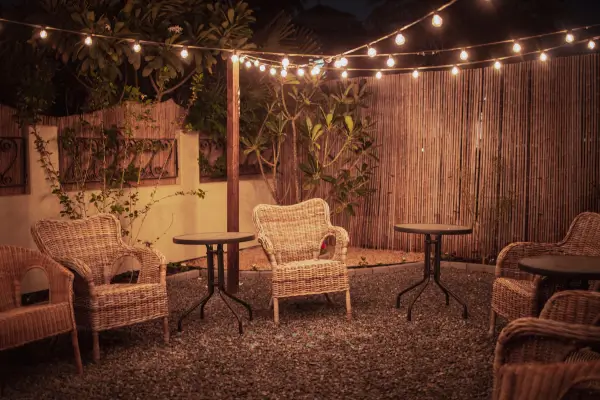DIY beeswax wraps offer a simple, sustainable way to replace plastic in your kitchen.
They’re reusable, breathable, and completely biodegradable.
These wraps are perfect for covering bowls, fruits, and sandwiches.
They help reduce waste without compromising freshness.
You don’t need fancy tools or expensive materials.
Making your own wraps is easy, fun, and rewarding.
It’s also a great way to explore sustainable living.
Small choices like this can lead to lasting habits.
In this article, you’ll learn how to make beeswax wraps at home.
Let’s turn simple fabric and wax into a powerful eco-friendly swap.
Why Choose Beeswax Wraps?
Plastic wrap is convenient but contributes heavily to household waste. Beeswax wraps offer a reusable solution that not only helps the environment but also looks and smells great. Here are a few benefits:
- Reusable and washable – lasts up to a year with proper care
- Breathable – prevents moisture buildup, keeping food fresher
- Compostable – when worn out, it can be safely composted
- Customizable – choose your own fabric patterns and sizes
These wraps are ideal for covering bowls, wrapping sandwiches, and storing produce like leafy greens, herbs, or cheese. For eco-conscious households or zero-waste lifestyles, they serve as an easy gateway into reducing plastic consumption.
Materials You’ll Need
Creating beeswax wraps doesn’t require special equipment. Here’s what you’ll need:
- 100% cotton fabric (thin, breathable, and washable)
- Beeswax pellets or grated beeswax blocks (organic preferred)
- Pine resin (optional – adds stickiness and pliability)
- Jojoba oil (optional – adds flexibility and antimicrobial properties)
- Parchment paper
- Baking sheet
- Paintbrush (dedicated for wax use)
- Oven
- Scissors or rotary cutter
- Ruler or measuring tape
If you’re making several wraps at once, prepare a clean workspace with multiple pieces of parchment and allow enough room for cooling.
Step-by-Step: How to Make Beeswax Wraps
1. Prepare Your Fabric
Wash and dry your cotton fabric to remove any residues or sizing. Cut into desired sizes based on common use cases:
| Wrap Size (inches) | Ideal Use Case |
|---|---|
| 8×8 | Covering jars, small fruit pieces |
| 10×10 | Sandwiches, medium bowls |
| 13×13 | Large produce, salad bowls |
Use pinking shears to avoid frayed edges, or hem them if you prefer a cleaner finish.
2. Mix Your Wax Blend (Optional)
If using a blend for better adhesion and durability, the typical ratio is:
- 4 parts beeswax
- 1 part pine resin
- 1 part jojoba oil
Melt the mixture together in a double boiler or old pan over low heat. Stir occasionally until completely liquefied.
3. Preheat and Line
Preheat your oven to 200ºF (93ºC). Line a baking sheet with parchment paper and place your fabric flat on top. Ensure the fabric is wrinkle-free for even application.
4. Apply the Wax
If not using a premade mixture, sprinkle a light, even layer of beeswax pellets directly onto the fabric. Optionally, add a few drops of jojoba oil and a pinch of pine resin. Make sure the wax is spread evenly across the surface.
Place the tray in the oven for 4–6 minutes, or until the wax melts completely and the fabric looks uniformly soaked.
5. Spread and Smooth
Remove the baking sheet from the oven and immediately use a dedicated paintbrush to spread the melted wax evenly. Work quickly while the wax is still warm. Brush the wax all the way to the edges for complete coverage.
6. Dry and Set
Lift the fabric carefully by one corner (tongs help!) and wave it gently in the air for 30–60 seconds. The wrap will cool and harden rapidly.
Hang on a line or lay flat on parchment to finish drying. Once cool, the wraps are ready to use.
How to Use Beeswax Wraps
Wraps become pliable with the warmth of your hands. Simply mold them around:
- Cut fruits and vegetables
- Cheese or bread
- Bowls and containers
- Snacks for school or work
They create a natural seal without adhesives. However, they’re not suitable for raw meat, hot food, or microwaves, as heat can melt the wax or lead to contamination.
Cleaning and Care
Beeswax wraps require gentle cleaning to maintain their longevity:
- Wash in cool water with mild dish soap
- Avoid hot water, scrubbing, or soaking
- Air dry completely before storing
- Store flat, rolled, or folded in a cool, dry place
With proper care, wraps can last 6–12 months. If they lose stickiness or become cracked, refresh them by repeating the melting and waxing process.
Tips for Success
- Use lightweight cotton for better pliability and absorption
- Light or patterned fabrics hide wax stains better than dark solids
- Don’t overapply wax—too much can make wraps stiff
- Label each wrap by size or purpose to streamline use
- Rewax every few months if needed to extend their usability
Creating beeswax wraps is a rewarding and practical DIY project. It not only helps reduce plastic waste but also gives your kitchen a personalized, handmade touch. Whether you’re gifting them in eco-friendly packages or using them daily, beeswax wraps are a simple, impactful step toward sustainable living.
Start with just one wrap and let it inspire a more conscious, environmentally friendly lifestyle—one small change at a time.



